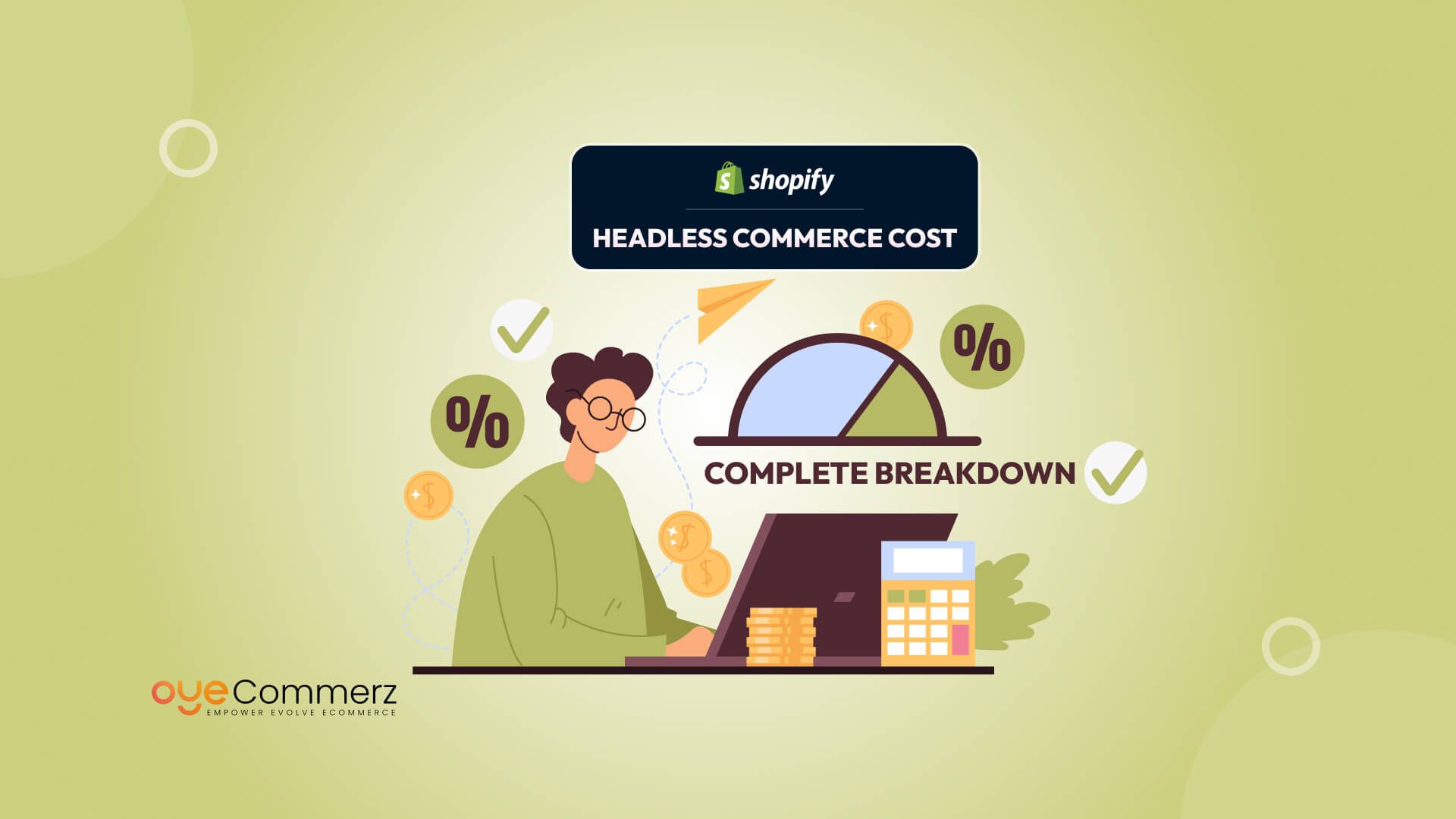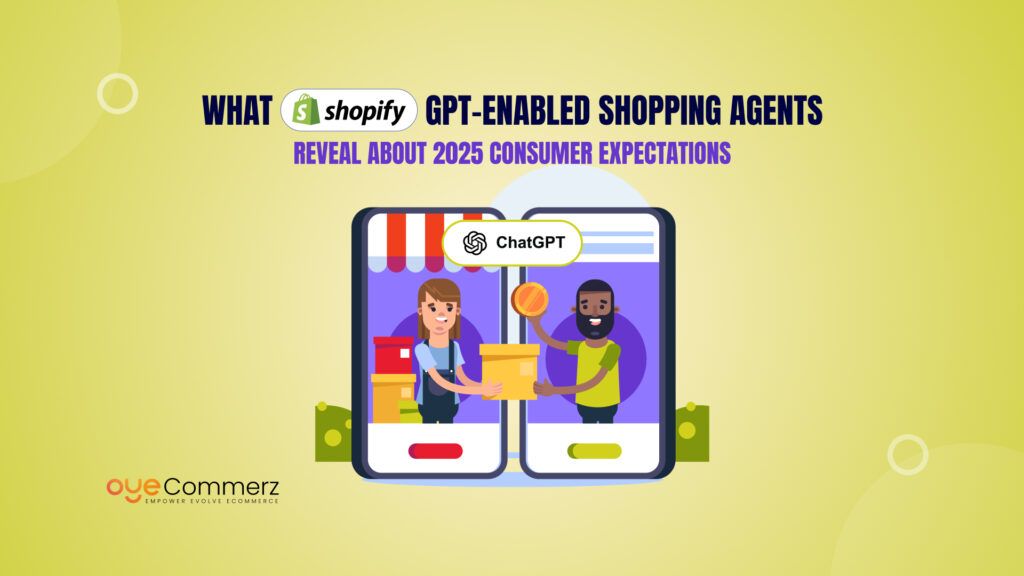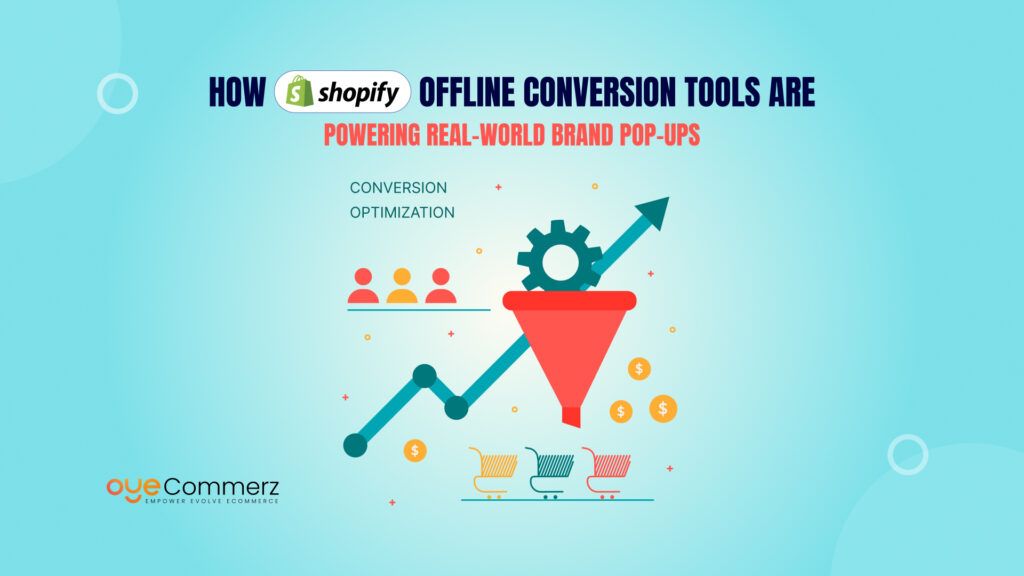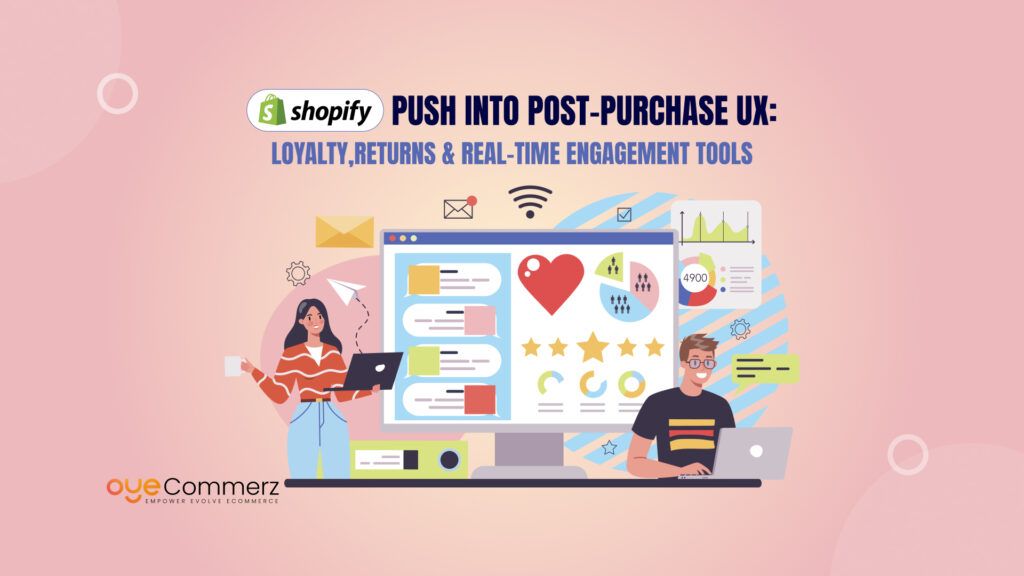Now, businesses are looking for more than just templates and plug-and-play features, they want full creative control. That’s where Shopify Headless Commerce services come into play. By decoupling the front-end from the back-end, brands can craft customized user experiences across multiple platforms. But with all this freedom comes an important question: What does it actually cost?
Unlike traditional setups, Shopify headless pricing isn’t one-size-fits-all. From development and design to hosting and integrations, the costs can vary dramatically depending on your business goals. If you’re considering making the leap, understanding the true financial investment is essential.
This blog dives deep into every component that shapes the total cost, from core Shopify plans to third-party tools, giving you a transparent view of where your money goes. Whether you’re a startup or scaling enterprise, this complete breakdown of Shopify Headless Commerce services will help you plan smarter and invest wiser.
Table of Contents
ToggleWhat Is Shopify Headless Commerce?
To put it simply, Shopify headless commerce is an eCommerce architecture where the front-end (what your customers see) is separated from the back-end (where all your product, customer, and order data lives). Instead of working within a rigid, all-in-one platform, you can build custom experiences using APIs to connect everything behind the scenes.
Shopify Headless Commerce services offer exactly that, powering your back-end with Shopify while giving you the freedom to build your front-end with modern frameworks like React, Vue.js, or Next.js. This means you’re not locked into Shopify’s built-in themes or design limitations.
So, why are so many brands making the switch?
- Customization: With headless, your design and user experience are limited only by your imagination.
- Speed & Performance: Faster page loads and optimized mobile experiences improve conversions.
- Omnichannel Reach: You can push content across web, mobile apps, smart devices, and more from a single back-end.
- Scalability: Whether you’re managing 1 product or 10,000, headless handles growth with ease.
In fact, a study by Salesforce found that companies using headless architectures see up to 50% faster site speeds, a major win in today’s competitive digital market.
While this flexibility is a game-changer, it’s important to understand that Shopify headless pricing can be more complex than traditional plans. You’re investing not just in the platform, but in the full ecosystem around it, from developers to content tools.
Why Choose Headless Shopify Over Traditional Shopify?
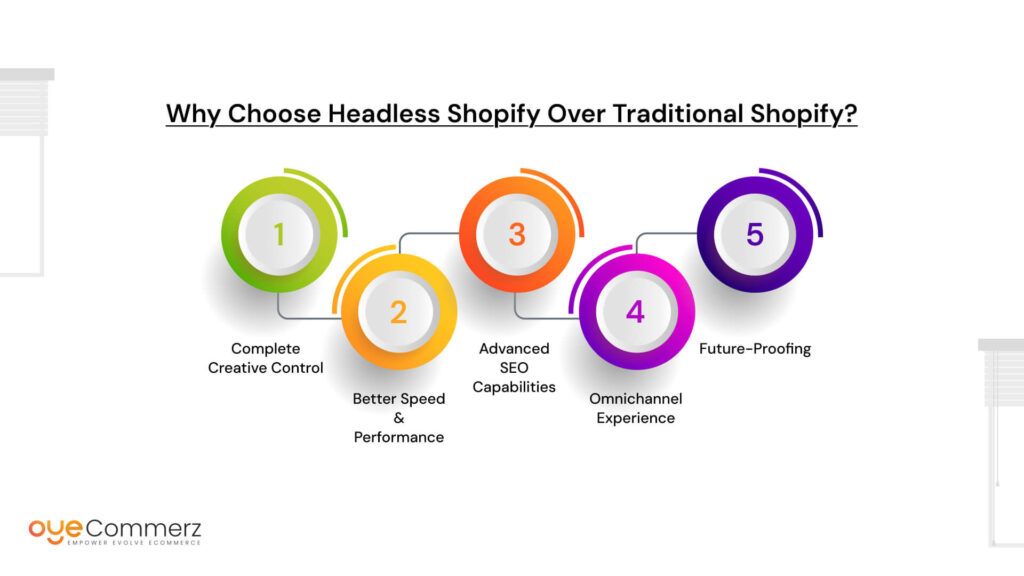
Traditional Shopify works beautifully for many brands, especially those that need a quick, manageable online store. But as your business grows, so do your demands. That’s where Shopify Headless Commerce services step in, offering the freedom to build tailored shopping experiences that go far beyond templates.
Here’s why many businesses are choosing headless over the classic Shopify setup:
- Complete Creative Control: Build your storefront exactly the way you envision it—no theme restrictions, no layout limitations.
- Better Speed & Performance: Use modern front-end frameworks to deliver lightning-fast, optimized experiences.
- Advanced SEO Capabilities: Customize metadata, URL structures, and schema in ways traditional themes don’t allow.
- Omnichannel Experience: Serve content seamlessly across your website, mobile apps, smart devices, and even wearables.
- Future-Proofing: A headless setup grows with you, it’s flexible, modular, and built for innovation.
Large-scale brands like Allbirds and Gymshark have already adopted headless models to support their global presence and unique customer journeys. They’re not just chasing trends, they’re staying competitive.
That said, choosing this route means taking on more technical complexity and, naturally, a shift in costs. Shopify headless pricing reflects the added customization and infrastructure, often requiring bigger investments upfront and for ongoing maintenance.
If your business demands more than what traditional Shopify can offer, moving to Shopify Headless Commerce services could be your next big growth step.
Breaking Down the Cost Factors of Shopify Headless Commerce

So, how much does going headless with Shopify actually cost? The truth is, Shopify headless pricing isn’t just about the Shopify plan you choose, it’s a layered investment. To understand the full picture, you need to break it down into core cost components.
Let’s explore what you’re really paying for when you opt for Shopify Headless Commerce services:
1. Shopify Core Plan
Your starting point is still a Shopify subscription. Whether you choose Basic, Shopify, Advanced, or Shopify Plus, this is your foundational cost:
- Basic: $39/month
- Shopify: $105/month
- Advanced: $399/month
- Shopify Plus: Starts at $2,000/month
Shopify headless pricing tends to lean on the Plus plan due to its API limits, advanced features, and customization capabilities.
2. Front-End Development
This is where headless gets real. You’ll need a development team to build and maintain your custom front-end using tools like React, Vue, or Next.js.
- Initial build cost: $5,000–$50,000+
- Ongoing maintenance: $500–$5,000/month
If you’re using an agency offering Shopify Headless Commerce services, expect a tailored package depending on your design, features, and integration needs.
3. Content Management System (CMS)
You’ll likely integrate a headless CMS like Contentful, Sanity, or Strapi:
- Entry-level: Free–$50/month
- Mid-tier: $100–$500/month
- Enterprise: $1,000/month and up
This is critical for non-dev teams to manage content without touching code.
4. Hosting and Infrastructure
If you’re using frameworks like Next.js with Vercel or Netlify:
- Hosting: Free–$100/month (scales with traffic)
- CDN & Serverless Functions: Additional usage-based costs
5. Third-Party Tools & Integrations
Analytics, personalization, A/B testing, search functionality, and more, these tools stack up quickly. Budget $100–$1,000+ depending on your stack.
When viewed as a whole, Shopify headless pricing can be significantly higher than traditional Shopify. But the return on investment is often found in better performance, brand experience, and scalability. When delivered by skilled professionals offering Shopify Headless Commerce services, this setup transforms how your business shows up online.
Development Costs: Agency vs Freelancers vs In-house
When considering Shopify Headless Commerce services, your development team plays a crucial role in shaping both the quality and the cost of your project. Let’s explore the pros and cons of hiring an agency, freelancers, or building an in-house team.
1. Agency
Pros:
- Full-service solutions with a dedicated project manager.
- Expertise in managing large, complex projects.
- Reliable with structured processes for smooth execution.
Cons:
- Higher rates, as you’re paying for both the team’s time and the agency’s overhead.
Ballpark figures:
$25,000–$150,000+ for a custom headless store.
Timeline:
6–12 months depending on complexity.
- Freelancers
Pros:
- More affordable than agencies.
- Flexibility to hire specialists for specific tasks.
Cons:
- Risk of inconsistent quality.
- Requires more management and coordination on your part.
Ballpark figures:
$5,000–$50,000 for a basic to mid-level project.
Timeline:
4–8 months, depending on availability and scope.
- In-house Team
Pros:
- Full control over the project.
- Greater long-term cost efficiency for ongoing development.
Cons:
- High upfront recruitment and training costs.
- Ongoing payroll expenses.
Ballpark figures:
$100,000–$300,000+ annually for a dedicated in-house team.
Timeline:
Varies; typically longer to build up team and resources.
Hidden Costs to Consider
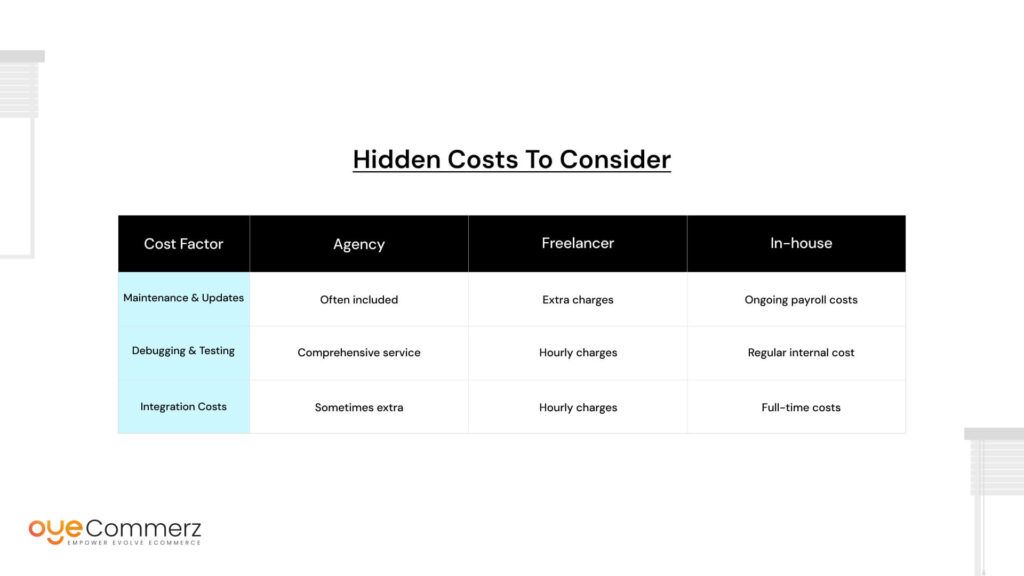
Choosing between these options comes down to budget, time, and how much control you want over the project. Shopify headless pricing for development varies greatly depending on your choice, so it’s important to weigh the pros and cons carefully.
Design & User Experience (UX) Costs
When investing in Shopify Headless Commerce services, design and user experience are crucial to success. Unlike traditional Shopify themes, headless setups rely on fully custom front-end builds, meaning you need a solid UI/UX strategy from the ground up.
Custom UI/UX design pricing can range from $3,000 to $20,000+, depending on the complexity and number of unique pages required. The goal is to craft a digital storefront that resonates with your audience and drives conversions.
Responsive design is non-negotiable, your store must perform seamlessly across desktops, tablets, and smartphones. User testing becomes an essential phase here, helping identify usability issues before launch.
Tools like Figma and Adobe XD are industry favorites for wireframing, prototyping, and collaborating with designers. These tools streamline the revision process and ensure everyone stays aligned.
Working with experienced UI/UX professionals may seem like a steep upfront cost, but it pays off in engagement, retention, and brand trust. After all, poor design can cost you more in lost conversions than a one-time investment in expert design.
Content Management System (CMS) Options & Costs
Choosing the right CMS is a core part of Shopify Headless Commerce services. Your CMS controls how content is created, organized, and delivered across your storefront and beyond.
Popular headless CMS options include:
- Sanity: Great for real-time editing and structured content.
- Contentful: Enterprise-ready, highly scalable.
- Prismic: Offers a simple interface for marketers.
- Strapi: Open-source, self-hosted option with high flexibility.
Subscription pricing varies:
- Entry-level: Free to $50/month
- Mid-tier: $100–$500/month
- Enterprise: $1,000+/month
Your choice of CMS directly impacts how easily you scale your content efforts and optimize for SEO. Features like dynamic routing, structured data, and content versioning become important as your catalog grows.
For small businesses, open-source platforms like Strapi or lower-tier plans on Prismic may suffice. For large enterprises, investing in Contentful or Sanity’s premium offerings ensures scalability and reliability.
App & Plugin Integration Costs
A headless setup doesn’t mean giving up Shopify’s app ecosystem, it just changes how you use it. Shopify’s APIs allow deep integrations, but you’ll often need custom development to plug third-party apps into your decoupled frontend.
There are two main paths:
- Custom plugins: Tailored to your architecture, more expensive but flexible.
- Off-the-shelf: Cost-effective but may require adjustments for compatibility.
Expect integration costs to range between $1,000–$10,000 depending on complexity. Beyond that, some apps carry:
- Licensing fees: $10–$200/month
- Annual renewals
- Additional charges for usage limits
Ongoing maintenance is also a consideration, API versions update, third-party tools change, and security patches are needed. A poorly maintained integration can cause site breakdowns, which adds to your operational costs.
Partnering with a team offering Shopify Headless Commerce services ensures these integrations remain stable and optimized.
Ongoing Maintenance & Scaling Costs
Shopify headless pricing doesn’t end at launch. Post-deployment, you’ll face monthly costs tied to keeping your system running smoothly and scaling with demand.
- Monthly Hosting: Platforms like Vercel, Netlify, or AWS provide hosting and CDN services. Monthly hosting fees can range from $20 to $500+ based on bandwidth and traffic.
- CMS Updates & Bug Fixes: Whether you’re using Sanity, Contentful, or another platform, expect monthly costs for updates, patching, and debugging. Budget $100–$1,000/month here.
- Developer Retainers: Hiring developers on a retainer ensures fast support and improvements. Rates vary from $500 to $5,000/month depending on project scale.
- Scaling Costs: As your business grows, so will your needs—more features, more integrations, and performance optimization. This includes A/B testing tools, personalization engines, and more advanced analytics.
- Importance of Documentation: Investing in good documentation now can reduce long-term costs by making future changes easier for any dev team to understand. It’s one of the most underrated cost-saving practices in the Shopify Headless Commerce services space.
Scalability and long-term performance demand continuous attention. Failing to plan for these post-launch costs can turn a sleek storefront into a fragile system that’s expensive to maintain.
Total Estimated Cost: Realistic Ranges
To make informed decisions about Shopify Headless pricing, it’s important to consider different business tiers and what each can expect to spend.
Small Businesses:
- Initial setup: $5,000–$20,000
- Monthly costs: $300–$1,000
Mid-size Brands:
- Initial setup: $20,000–$60,000
- Monthly costs: $1,000–$5,000
Enterprise-level Businesses:
- Initial setup: $60,000–$250,000+
- Monthly costs: $5,000–$20,000
Setup includes development, design, integrations, and initial CMS costs. Monthly operations cover hosting, CMS subscriptions, plugin licenses, and developer retainers.
When is it worth it? If your business relies heavily on unique customer experiences, advanced content strategies, and multi-channel scaling, Shopify Headless Commerce services provide unmatched flexibility. However, for brands with basic requirements, traditional Shopify remains a powerful and far more affordable option.
Hidden Costs to Be Aware Of
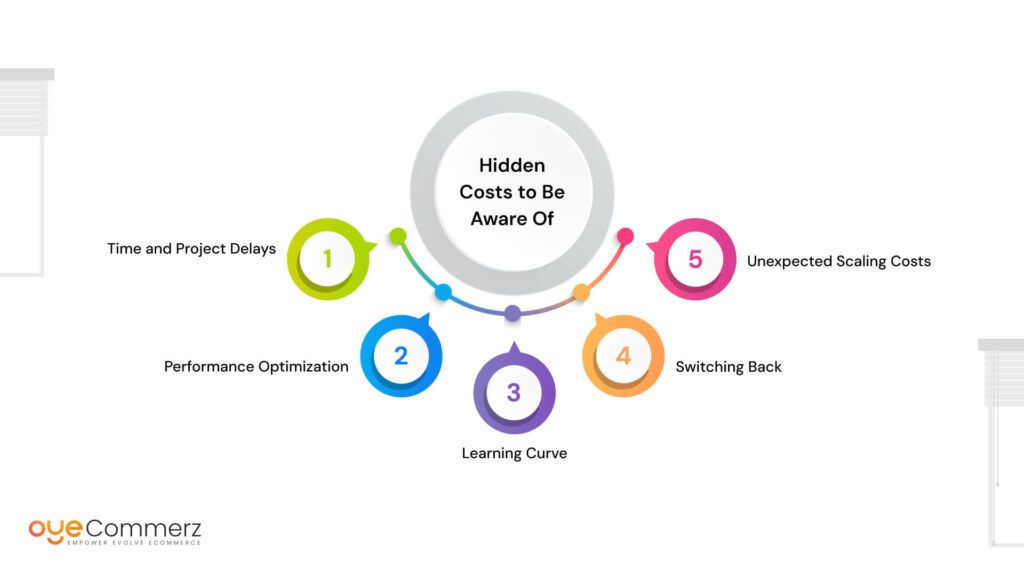
Even with a well-planned budget, Shopify Headless pricing can come with unexpected costs. These often stem from technical, operational, and strategic challenges.
- Time and Project Delays: Custom development is prone to shifting timelines. Missing milestones can lead to extended retainer fees and slower time-to-market.
- Performance Optimization: A headless store needs speed tuning—caching strategies, image optimization, and script minification. These technical tasks might not be included in initial quotes.
- Learning Curve: Your team will need to learn new tools and workflows. This can reduce productivity in the early stages and may require training investments.
- Switching Back: If headless isn’t the right fit, returning to traditional Shopify can be costly. You’ll need to rebuild templates and restructure content.
- Unexpected Scaling Costs: Traffic spikes may require additional server resources, API upgrades, and increased CDN usage. Also, more features = more maintenance.
Understanding these hidden costs helps ensure your Shopify Headless Commerce services budget remains realistic and adaptive.
Tips to Keep Costs Under Control
To make the most of your investment in Shopify Headless Commerce services, consider these practical cost-saving strategies:
- Start with MVP: Build a Minimum Viable Product with essential features first. Scale as you validate your model and audience.
- Use Open-source Tools: Leverage platforms like Strapi or Nuxt.js to avoid high licensing costs.
- Choose the Right CMS: Pick a CMS that fits your current scale and has a clear upgrade path as you grow.
- Reuse Code and Design Assets: Maintain a design system and code library to reduce development cycles.
- Work with Agile Teams: Agile sprints help avoid scope creep and allow for faster iterations within a controlled budget.
Being strategic upfront saves headaches and overspending down the line.
Who Should NOT Go Headless Yet
Shopify Headless Commerce services aren’t for everyone. Certain businesses are better off sticking with traditional Shopify, at least for now.
- Early-stage Startups with Tight Budgets: The upfront cost of going headless can be prohibitive. Prioritize launching fast with out-of-the-box Shopify templates.
- Brands with Basic Customization Needs: If your current Shopify store supports your design and marketing needs, headless may add unnecessary complexity.
- Non-tech-savvy Founders: Managing a headless architecture requires a degree of technical literacy. Without in-house devs or reliable partners, it’s risky.
- Slow-moving Teams: Headless projects need fast iteration cycles. If your decision-making is slow, development costs can quickly snowball.
That said, traditional Shopify is still an incredibly robust platform. It’s fast, user-friendly, and well-supported with thousands of themes and apps. It’s perfect for merchants who value ease of use over complex customization.
Evaluate your goals and resources carefully before jumping in. Headless is powerful, but only when the timing and readiness align.
Ready to Go Headless with Confidence?
Let Oyecommerz simplify the complex. From seamless design to powerful backend integrations, we specialize in Shopify Headless Commerce services that scale with your brand.
Contact us today and unlock performance-driven commerce, tailored just for you.
Contact to Migrate your Site to Shopify Now
Conclusion
Shopify Headless Commerce isn’t just a trend, it’s a transformative shift for brands ready to level up their digital storefronts. While the upfront investment might seem steep compared to traditional Shopify, the flexibility, performance, and scalability you gain can be a game-changer, especially for growing and enterprise-level businesses.
Understanding the full picture, from development and design to CMS, plugins, and ongoing support, helps you make smarter, more cost-effective decisions. Whether you work with an agency or in-house team, staying informed about Shopify headless pricing is the key to avoiding surprises and staying within budget.
If you’re a business that thrives on customization, speed, and seamless UX, Shopify Headless Commerce services might be the upgrade you’ve been waiting for. But if you’re just starting out, traditional Shopify may still be your best friend, for now.
Ultimately, the decision comes down to your goals, budget, and how fast you’re ready to grow.
Frequently Asked Questions
Shopify Headless Commerce costs can range from $5,000 to $100,000+ depending on design, development, CMS, and ongoing maintenance. Monthly costs vary by scale and tools used.
Traditional Shopify plans start at $39/month (Basic), with higher tiers offering advanced features. Additional costs may include apps, themes, and transaction fees.
This is a promotional offer from Shopify where new users can access premium plans for just $1/month for the first 3 months before standard pricing applies.
Yes, generally. Headless commerce requires custom development and third-party services, making it costlier upfront but more scalable in the long run.
Small businesses with limited budgets may find traditional Shopify more cost-effective. Headless is better suited for those prioritizing flexibility and custom experiences.

